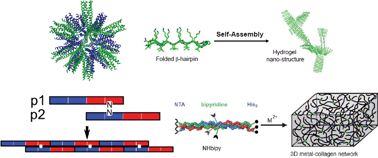In recent years our ability to design and assemble peptide-based materials and objects de novo (i.e. from first principles) has improved considerably. This brings us to a point where the resulting assemblies are quite sophisticated and amenable to engineering in new functions. Whilst such systems could be used in a variety of ways, biological applications are of particular interest because of the demand for biocompatible, readily produced systems with potential as drug-delivery agents, components of biosensors and scaffolds for 3D cell and tissue culture. This tutorial review describes the building blocks (or tectons) that are being used in peptide assembly, highlights a range of materials and objects that have been produced, notably hydrogels and virus-like particles, and introduces a number of potential applications for the designs.
